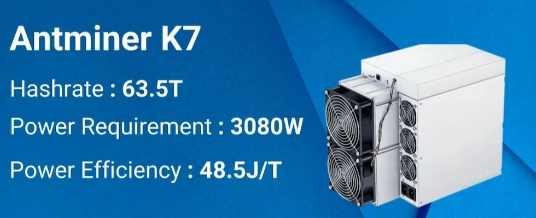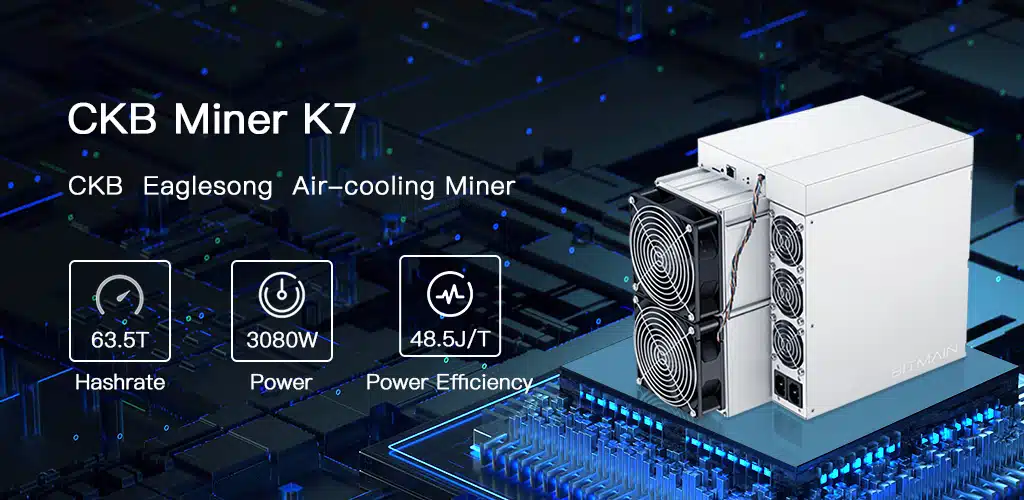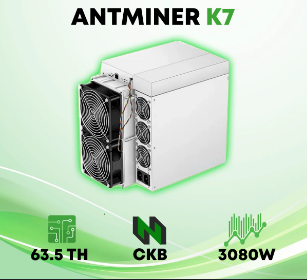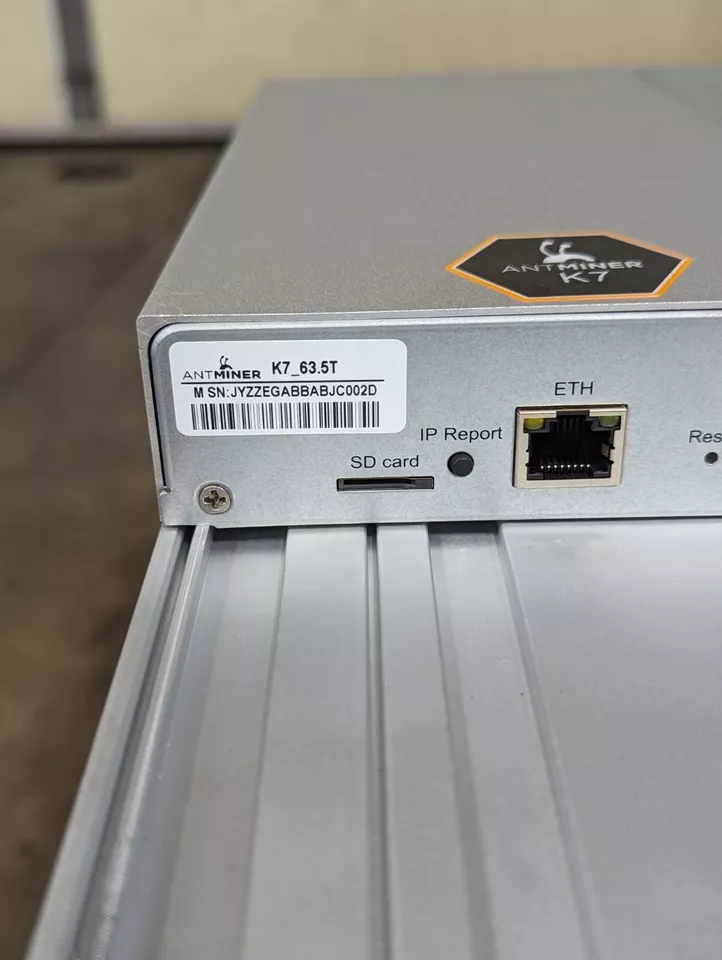What Are the Installation Requirements for CKB Miner K7 in a Mining Facility?
Introduction to the CKB Miner K7
The cryptocurrency mining landscape continues to evolve, with specialized hardware like the CKB Miner K7 offering miners the opportunity to capitalize on specific algorithms. Designed by Bitmain specifically for the Eaglesong algorithm that powers the Nervos Network’s CKB (Common Knowledge Byte) cryptocurrency, the K7 represents a significant leap forward in mining efficiency and performance. With its impressive 63.5 TH/s hashrate and 48.5 J/TH power efficiency, this miner has quickly become a favorite among professional mining operations. However, to fully realize its potential, proper installation in a mining facility is crucial. This article will guide you through all the essential requirements for setting up your CKB Miner K7 to ensure optimal performance, longevity, and return on investment.
Electrical Requirements for CKB Miner K7 Installation
Power Supply Specifications
The CKB Miner K7 operates on a dual AC input system requiring 200-240V at 50-60Hz frequency. Each unit consumes approximately 3080W (±5%) under normal operating conditions, which translates to about 12.8A at 240V. This high power demand means you cannot simply plug the miner into a standard household outlet—professional electrical infrastructure is mandatory.
For a single K7 unit, you’ll need:
- Two dedicated 15A circuits (one for each power input)
- Properly rated PDU (Power Distribution Unit) or high-quality surge protectors
- 10AWG or thicker copper wiring for main power runs
- Industrial-grade connectors and receptacles rated for continuous high-load operation
Electrical Infrastructure Planning
When deploying multiple K7 units, careful electrical planning becomes critical. A rack of 10 K7 miners would require approximately 30,800W (30.8kW) of power capacity. At 240V, this translates to about 128A of current draw. Such demands typically require:

- Three-phase power distribution for larger installations
- Proper circuit balancing across phases
- Commercial or industrial-grade electrical panels with adequate breaker capacity
- Potential transformer upgrades for facilities not originally designed for high-density power loads
Always consult with a licensed electrician before installing mining equipment, as improper electrical setups can lead to equipment damage, fire hazards, or violation of local electrical codes.
Cooling and Ventilation Requirements
Heat Output and Airflow Needs
The CKB Miner K7 generates significant heat during operation—approximately 10,500 BTU per hour per unit. This substantial thermal output demands robust cooling solutions to maintain optimal operating temperatures (0-40°C ambient) and prevent thermal throttling or hardware damage.
Key cooling considerations include:
- Airflow Requirements: Each K7 needs at least 500 CFM (cubic feet per minute) of fresh air circulation
- Intake/Exhaust Separation: Maintain at least 3 feet between hot air exhaust and fresh air intake to prevent heat recirculation
- Ventilation Path: Create a clear airflow path through the mining area with minimal obstructions
Cooling System Options
Depending on your facility’s size and climate, several cooling approaches may be appropriate:
- Air-Cooled Systems:
- Industrial exhaust fans (minimum 36″ diameter for larger installations)
- High-volume intake fans with proper filtration
- Tunnel ventilation designs for high-density deployments
- Liquid Cooling Options:
- Immersion cooling tanks (requires specialized K7 preparation)
- Direct-to-chip liquid cooling systems
- Hybrid air/liquid cooling solutions
- Environmental Controls:
- Temperature and humidity monitoring systems
- Automated fan speed controllers
- Emergency cooling fail-safes
Remember that the K7’s humidity tolerance ranges from 10-90% RH (non-condensing), so dehumidification or humidification may be necessary in extreme climates.

Physical Space and Racking Considerations
Unit Dimensions and Density Planning
The CKB Miner K7 measures 430 x 195.5 x 290mm (16.9″ x 7.7″ x 11.4″) without packaging, with a weight of approximately 12.2kg (26.9 lbs). While relatively compact compared to some mining rigs, proper spacing is essential for adequate airflow and maintenance access.
Recommended spacing guidelines:
- Rack Mounting: 1U per K7 unit with minimum 1″ clearance above and below
- Open Frame Setups: Minimum 6″ between units horizontally, 12″ vertically
- Aisle Space: At least 3 feet front and rear for maintenance access
Rack and Enclosure Options
Various racking solutions work well with the K7:
- Standard 19″ Server Racks:
- Adjustable rails for proper weight distribution
- Optional blanking panels to manage airflow
- Cable management accessories
- Mining-Specific Open Frames:
- Heavy-duty steel construction
- Optimized for front-to-back airflow
- Modular designs for easy expansion
- Custom Enclosures:
- Soundproof boxes for residential or urban installations
- Weatherproof outdoor enclosures
- Containerized mining solutions for large-scale operations
When planning your layout, consider future expansion—leave room for additional units and ensure your power and cooling infrastructure can scale accordingly.
Network Infrastructure Requirements
Connectivity and Bandwidth
The CKB Miner K7 features 10/100M Ethernet connectivity, which while not particularly bandwidth-intensive, requires reliable low-latency connections to mining pools. Each unit typically uses less than 1Mbps of continuous bandwidth, but network reliability is more critical than raw speed.
Key networking considerations:
- Switch Capacity: A 24-port gigabit switch can comfortably handle 20+ K7 units
- Cabling: CAT5e or better Ethernet cables (shielded recommended in high-interference environments)
- Redundancy: Dual network paths or failover systems for mission-critical operations
Network Configuration Best Practices
To ensure optimal performance:
- Assign static IP addresses to each miner for consistent monitoring
- Implement VLAN segregation to separate mining traffic from other network operations
- Configure proper Quality of Service (QoS) rules if sharing bandwidth with other services
- Set up remote management capabilities (SSH, VPN) for off-site monitoring
- Implement basic firewall rules to protect against unauthorized access
Noise Considerations and Mitigation
Sound Output Characteristics
The CKB Miner K7 produces approximately 75dB of noise at 1 meter distance under full load. This significant sound output requires consideration, especially in residential or noise-sensitive areas.
Noise reduction strategies include:

- Acoustic Enclosures: Commercial soundproof boxes or DIY solutions using mass-loaded vinyl
- Vibration Isolation: Anti-vibration pads or mounts to reduce structure-borne noise
- Distance Placement: Locating miners farther from sensitive areas with extended cabling
- Fan Modifications: Aftermarket quiet fans or fan speed controllers (may affect cooling performance)
Facility Soundproofing Options
For larger installations:

- Soundproof Wall Panels: Acoustic foam or fiberglass insulation
- Double-Wall Construction: With air gaps for sound isolation
- Baffled Intake/Exhaust: Sound-absorbing ductwork for ventilation systems
- White Noise Generation: Masking lower-frequency miner noise
Always check local noise ordinances before setting up a mining operation in populated areas.
Maintenance and Operational Considerations
Routine Maintenance Requirements
To keep your CKB Miner K7 running optimally:
- Monthly:
- Inspect and clean air filters (if used)
- Check all cable connections
- Verify fan operation and bearings
- Quarterly:
- Thorough internal dust removal (compressed air)
- Thermal paste inspection (if accessible)
- Firmware updates
- Annually:
- Full electrical safety inspection
- Fan replacement if showing wear
- Complete system diagnostics
Monitoring and Management Systems
Implement robust monitoring to catch issues early:
- Temperature Monitoring: Per-unit and environmental sensors
- Hashrate Tracking: Real-time performance monitoring
- Power Consumption Logging: Detect efficiency drops
- Alert Systems: Email/SMS notifications for critical events
Popular monitoring solutions include:
- Hive OS
- Awesome Miner
- Minerstat
- Bitmain’s own monitoring tools
Safety and Regulatory Compliance
Electrical Safety Standards
Ensure your installation meets all relevant codes:
- NEC (National Electrical Code) for US installations
- IEC standards for international operations
- Local building and fire codes
- Proper grounding and GFCI protection
Fire Prevention Measures
Essential precautions include:
- Fire Suppression Systems:
- Clean agent systems (avoid water-based in electrical areas)
- Thermal fuses and circuit breakers
- Smoke detectors with automatic power cutoff
- Operational Practices:
- No flammable materials near equipment
- Regular thermal imaging inspections
- Emergency power shutdown procedures
Regulatory Considerations
Depending on location, you may need to address:
- Business licensing for commercial mining operations
- Electrical permits for high-power installations
- Noise ordinance compliance
- Energy use reporting requirements
Conclusion: Optimizing Your CKB Miner K7 Installation
Proper installation of your CKB Miner K7 goes far beyond simply plugging in the hardware. By carefully addressing electrical requirements, cooling solutions, physical layout, network infrastructure, noise control, maintenance planning, and safety considerations, you create an environment where your mining investment can thrive. The K7’s impressive 63.5 TH/s hashrate and 48.5 J/TH efficiency can only be fully realized when the supporting infrastructure matches the miner’s capabilities.
Remember that every mining facility is unique—factors like local climate, electricity costs, available space, and regulatory environment will influence your optimal setup. Start with a small-scale deployment if possible, monitor performance carefully, and scale up as you refine your installation approach. With proper planning and execution, your CKB Miner K7 installation can deliver reliable, profitable mining operations for years to come.
By meeting and exceeding these installation requirements, you position yourself to take full advantage of the K7’s industry-leading performance and efficiency, maximizing your return on investment in the competitive world of CKB mining. Whether you’re setting up a single unit in a garage or deploying hundreds in a commercial mining farm, attention to these details will separate successful operations from those plagued with downtime and inefficiencies.